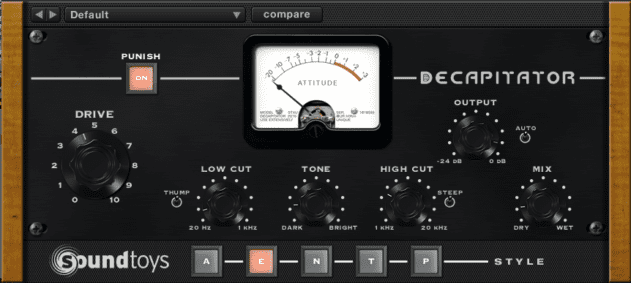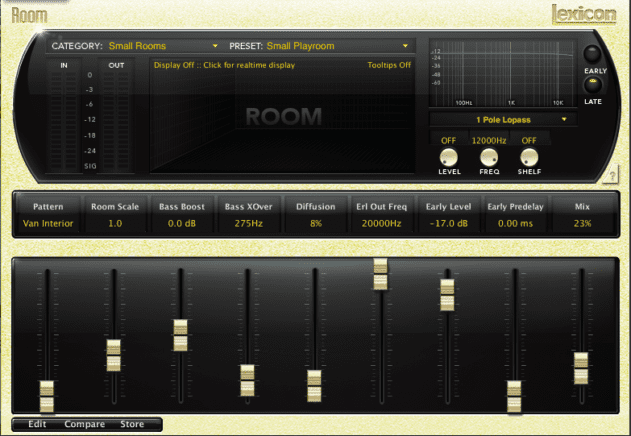In the latest Beat Dissected, we program a disco beat inspired by the tight, raw drum sounds of classic late 70s and early 80s recordings.
Beat Dissected is a regular series in which we deconstruct drum patterns, showing you how to program them in any DAW. Just copy our grid in your own software to recreate the loop.
Here’s the beat we’re building today:
To download the samples for this beat, click here. The samples are provided on a completely royalty-free basis. They may not be sold or given away, either in whole or in part.
You must register for a free Attack account and sign up to receive our newsletter in order to download the samples. New members can register here. Existing members can log in here.
Spec
Tempo
110-118bpmSwing
50%Sounds
Complex layeringStep 1
When recreating live grooves in a sequencer you need to pull off a sound and programming double-whammy to make the beat not only sound like the real deal, but also groove like a real life beat. In this case that means trademark disco drumming motifs (such as the double snare turnaround and single open hat) as well as the subtle and intentional imperfections which are typical of tight disco drumming.
We begin with a four-to-the-floor kick, made up of four layers. The dominant sound is a sampled hit from an old disco record (with a layer of vinyl dust). But that alone isn’t going to satisfy the demands of the modern dancefloor. To give it more definition, the live hit is layered with snare samples from a Yamaha RX21 and Roland TR-707 to supply mid-range snap and body. We’ve also subtly bulked up the bottom end with some low-level Roland CR-78.
The RX21 is a cheap late 80s model from the same range as the much more famous RX5. We’ve used it a lot during this beat because its sound qualities fit the disco bill perfectly. With its tight and snappy sound it offers the kind of definition we’re looking for. It’s also a more obscure choice than big hitters like the 808, 909 or even LinnDrum, giving a more unique quality to the beat.
Here’s each sound played alone (in the order RX21, CR-78 , TR-707, live kick). The final hit is our sample, with all four elements layered:
The secret to successful layering is deciding what you want each sound to contribute to the combined whole and then emphasising those chosen characteristics using a combination of filtering, volume and/or transient shaping. So because the sole purpose of the CR-78 sample, for example, is to anchor the low-end, we’ve filtered out higher frequencies that would otherwise interfere with the more important frequencies in the other sound.
The final step is some saturation using Soundtoys’ Decapitator that does two things: it adds an injection of old-school grit while also gluing the kicks together into a united whole.
Step 2
For the snare we’ve layered an RX21 snare sample with two TR-707 snares. The RX21 sits loud, proud and central while the 707 snares are panned hard left and hard right, each very slightly detuned and with subtly different volume envelope settings to create small variations between the two. The effect is to give depth and character to the snare sound, along with definition across the stereo spectrum. Some room reverb (with a short decay to maintain the beat’s crisp tightness) gives the sound a subtle lift.
The snare hits on the second and fourth beat of each bar, although you’ll note we’ve nudged the hits slightly left and right from the grid to add a more human feel. Note also the ghost hit before the final snare that creates the double-snare turnaround – a classic disco drumming touch that pushes the groove forward.
Step 3
The groove starts to come alive with the addition of the closed hi-hats.
Hat 1, playing 8th notes, comes courtesy of the Boss DR-220, treated in the same way as the 707 snare – with two instances panned hard right and left, each slightly detuned to add depth and stereo image. A similar effect can be achieved using stereo room reverb on a single instance of the hi-hat.
Hat 2, another DR-220 closed hat sample, fills in some of the gaps in the beat.
Note the volume variations across both hat parts, with darker hits indicating higher velocities. These variations help emphasise the human feel to the beat.
Step 4
Just the one hit for the open hat. The sound needs to match with the closed hats, sounding like it comes from the same kit and recording. When you’ve got something that works, tweak its envelope so that it cuts off as the next closed hat sample falls (you could also use mute groups for the same purpose). This models how a real drum kit works, adding to the authenticity.
Step 5
A lot of classic disco beats feature a live handclap. We’ve recorded a bar of live clap, standing a foot or so back from a vocal mic to allow a good level of room ambience into the recording. This is emphasised with a lively ring of short room reverb and some saturation to solidify the sound. The final stage is filtering: both in the low end to stop the clap from interfering with the more low/mid-heavy snare and in the high end to give it a more vintage tone.
We’ve left some timing imperfections in the recording to add to the organic feel.
Step 6
If you’re after a live-sounding beat, it’s almost impossible not to use a live loop layer at some point (although if you’re up for programming a live-sounding conga or bongo loop, start here). For the percussion layer we’ve used a loop which we’ve pitched up two semitones so that it gels tonally with the programmed sounds. A dash of saturation (no more than 10%) tames the more strident transients and settles the loop into the beat.
To download the samples for this beat, click here. The samples are provided on a completely royalty-free basis. They may not be sold or given away, either in whole or in part.










06.43 PM
Fantastic article.
11.57 PM
Helpful article!
Thanks for doing this.
09.05 PM
Brilliant